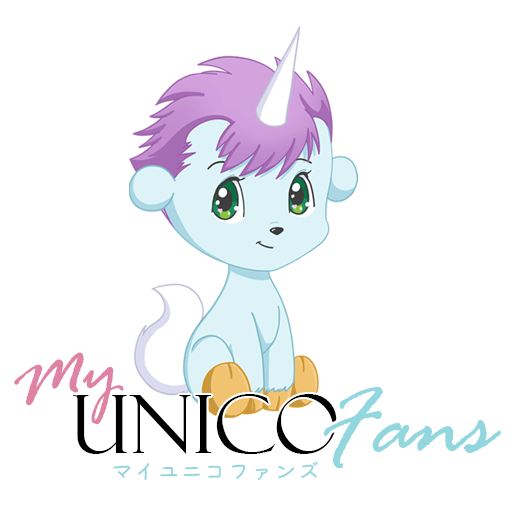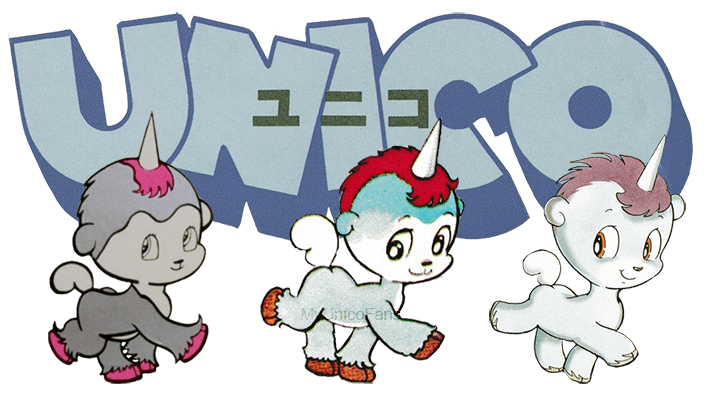

Sanrio released the first issue of Lyrica in Japan, November 1976, five months after Unico’s creation. The magazine not only featured full-color comics but also plenty of ads for Sanrio goods, crafts, contests, horoscopes, and more! Tezuka was heavily busy with other works (Black Jack, Buddha, Three-eyed One, Phoenix, etc), but continued to draw Unico for several years.
Tezuka drew many chapters that were often broken into parts while published in Lyrica magazine. Chapter 1, for an example, was split into two parts: part one in the December 1976 issue (No. 2) of Lyrica, and part two in the January 1977 issue (No. 3). This format continued throughout the magazine’s run for not only Osamu Tezuka, but several other manga artists as well.
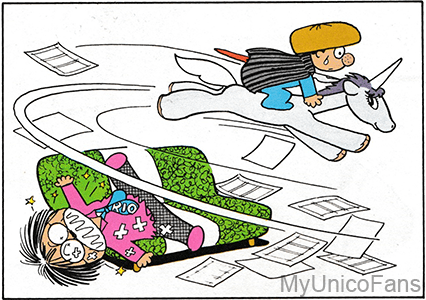
From June 20th to July 8th 1977, Tezuka was travelling across the globe to places like Easter Island, the Inca Ruins, Mexico City, Paris, etc. The August 1977 issue (No. 10) did not include a chapter of Unico, but a few pages of “Tezuka’s Diary” showing Unico and Tezuka traveling were published instead. The editors created a special quiz where 20 people would receive an autographed version of Tezuka’s new book How to Draw Manga (Publisher: Kobunsha) or a stuffed animal Unico (which Sanrio recently released).
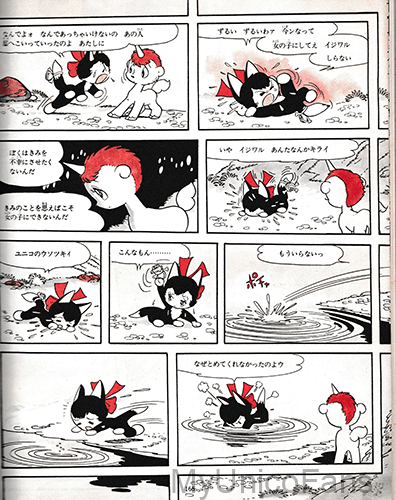
Unfortunately, Tezuka was admitted to Nippon Medical School Hospital on August 15th because of acute hepatitis. The third installment of Houki ni Notta Neko (The Cat on the Broomstick) was published in bicolored format in the September issue (No. 11).
Unico returned to hiatus once more and other manga by Tezuka were published in its place until his health improved. For October’s issue (No. 12), Shiro Kujaku no Uta (Song of the White Peacock), a shoujo manga previously created back in 1959, was put in Unico’s place. Midori no Hate (Where the Greenery Ends), from the S.F. Fancy Free Series, was published in the November issue (No. 13).
Part four of Houki ni Notta Neko would return in the December issue (No. 14), in two-tone and monochrome format with the final conclusion. Around this time, the cost of full-colored pages was not only becoming expensive, it was also difficult for many of the artists to maintain.
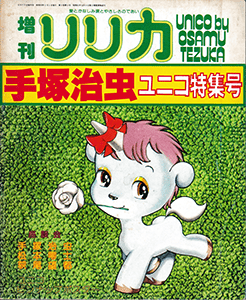
The next month, January 1, 1978, Sanrio released the first collection of chapters in the book called Special Edition Lyrica–Unico Special Issue. Tezuka made several edits before its release, but had not colored the rest of the chapters. The book features full-colored, bicolored, and monochrome pages—similar to the format used in the magazines.
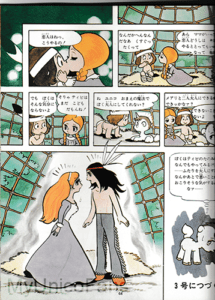
Lyrica Magazine No. 2

Lyrica Magazine No. 3
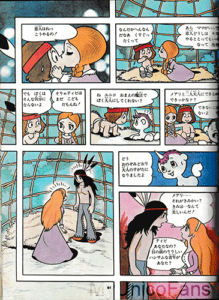
Special Edition Lyrica – Unico Special Issue
When the Special Edition Strawberry Picture Book collections were released in May and June of 1979, a few of the chapters were rearranged from when they were originally published. The reason for this was due to several of the chapters being published in monochrome format, and the colored chapters would go first in the collections. As an example, the January 1978 issue (No. 15) featured part one of the Hitoribocchi no Unico (Unico and Solitude) chapter as Chapter 5 in the magazine. All published versions of the Unico manga to this day feature that chapter as Chapter 8.
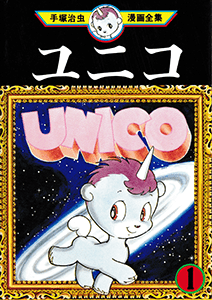
As sales declined over the years, Sanrio discontinued the Lyrica magazine with the last issue being in March 1979 (No. 29). They returned the rights to all the artists, allowing them to publish elsewhere. Unico was the last manga in the shoujo genre that Tezuka would create before his passing on February 9, 1989.
Of course, Unico’s adventures continued, but in the children’s magazine, Shougaku Ichinensei (First Grader), from April 1980 to January 1984. Only a few other countries have translated these comics.
Several publishers have released Unico in Japan over the years. Unlike many of the earlier releases, the manga is now fully colorized and often published that way.
Unico has also been translated and published in many countries across the globe, often based on Kodansha’s Osamu Tezuka Manga Complete Works version. Newer publications now feature the full-color version of the manga.
<< Back
Notes:
– English translations of the chapters are based on Ben Applegate’s translations for the DMP english release.
Sources:
- “【明田川進の「音物語」】第8回 「星のオルフェウス」制作秘話と、ロスで手塚先生のお手伝いをした話 : ニュース – アニメハック (eiga.com)” – Susumu Aketagawa. July 11, 2018
- Haruji Mori, General Manager, Tezuka Productions. (2011). Osamu Tezuka Bunko Complete Works – Unico. Japan: Kodansha
- Osamu Tezuka. (1983). Osamu Tezuka Manga Complete Works: Unico 2 (vol. 286). Japan: Kodansha.
